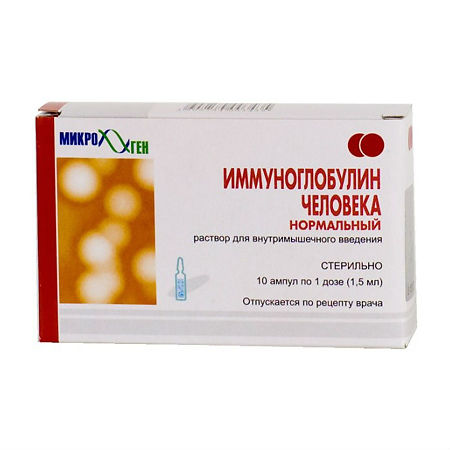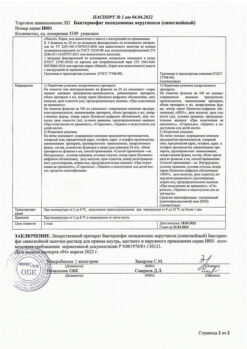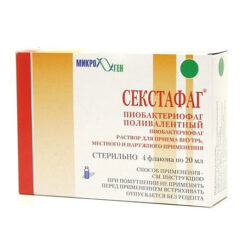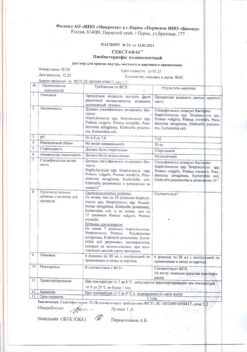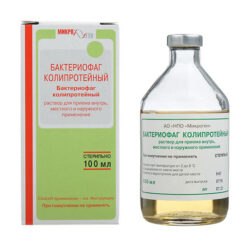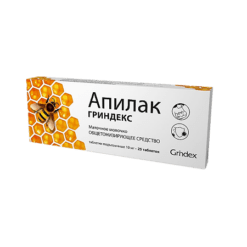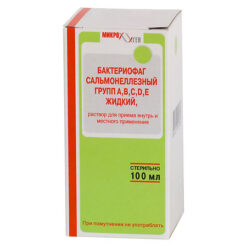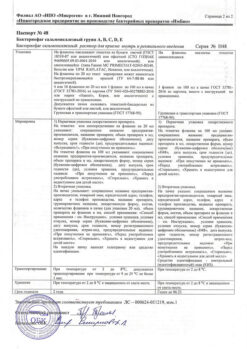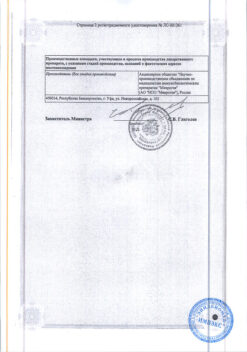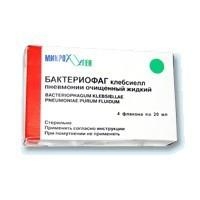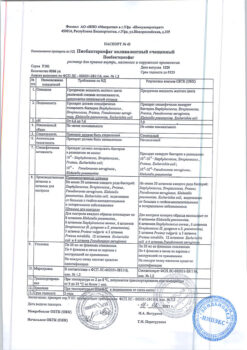No products in the cart.
Human immunoglobulin normal, 100 mg/ml 1.5 ml 10 pcs
€181.67 €151.39
Description
Prevention of hepatitis A and measles.
Indications
Indications
Prevention of hepatitis A and measles.
Special instructions
Special instructions
To avoid the formation of foam, the drug is drawn into a syringe with a wide-bore needle, and another needle is used for injection.
The drug should not be used after the expiration date.
During administration of the drug, the patient’s condition should be carefully monitored.
Persons who are injected with the drug must be under medical supervision for 30 minutes after its administration. Injection sites must be provided with anti-shock therapy. If symptoms of an allergic reaction appear, appropriate therapy is carried out immediately.
Unused drug and consumables should be disposed of in an appropriate manner.
The administration of immunoglobulin can lead to a transient increase in various passively transferred antibodies in the patient’s blood and to false-positive results of serological tests (for example, Coombs test).
Safety information regarding infectious agents
The drug is produced from human plasma. Standard measures to prevent the transmission of infections resulting from the use of medicinal products made from human blood or plasma include selecting donors, screening individual donations and plasma pools for specific markers of infection, and incorporating effective manufacturing steps to inactivate and/or remove viruses. Despite this, when using drugs made from human blood or plasma, the possibility of transmission of infectious agents cannot be completely excluded. This provision also applies to unknown or new viruses and other infectious agents. Measures taken to ensure antiviral safety are considered effective for enveloped viruses such as HIV, hepatitis B and C viruses, and for non-enveloped viruses such as hepatitis A virus and parvovirus B19. There is encouraging clinical experience indicating that there is no transmission of hepatitis A virus and parvovirus B19 with human immunoglobulin preparations, and it is also suggested that the presence of antibodies makes a significant contribution to viral safety.
The administration of the drug should be registered in established registration forms indicating the name of the drug, batch number, release date, expiration date, manufacturer, date of administration, dose and adverse reactions to the drug.
Active ingredient
Active ingredient
Normal human immunoglobulin
Composition
Composition
1 ml of the drug contains:
Active ingredient:
– human plasma proteins, of which immunoglobulin G is at least 97% – 100 mg.
Excipients:
– glycine (aminoacetic acid) – 22.5 mg;
– water for injection – up to 1 ml.
The drug does not contain preservatives or antibiotics.
Pregnancy
Pregnancy
The safety of the drug during pregnancy and breastfeeding has not been studied in controlled clinical trials. The use of the drug during pregnancy and breastfeeding is possible only in cases where the potential benefit to the mother outweighs the potential risk to the fetus and child. Immunoglobulins pass into breast milk and protective antibodies can be transferred from mother to child during breastfeeding.
Contraindications
Contraindications
History of allergic reactions or severe systemic reactions to the administration of human blood products. Hypersensitivity to the excipient.
Side Effects
Side Effects
The incidence of side effects is determined as follows: very often (≥ 1/10), often (≥ 1/100 and < 1/10), infrequently (≥ 1/1,000 and < 1/100), rarely (≥ 1/10,000 and < 1/1,000), very rarely (< 1/10,000, including isolated cases).
The following side effects are possible:
General disorders and disorders at the injection site:
Common: pain at the injection site.
Rarely: chills, hyperthermia, weakness, hyperemia at the injection site.
Immune system disorders:
Very rare: allergic reactions (urticaria, itching, rash), anaphylactic shock.
Nervous system disorders:
Very rare: headache, dizziness.
Digestive system disorders:
Very rare: nausea, vomiting.
Musculoskeletal disorders:
Very rare: back pain, joint pain.
Cardiovascular system disorders:
Rarely: decreased blood pressure.
Interaction
Interaction
The drug can be used in complex therapy of the disease in combination with other drugs, in particular antibiotics. In this case, mixing the drug with other drugs in the same syringe is not allowed.
In infants, do not use simultaneously with calcium gluconate.
The administration of immunoglobulin may reduce the effectiveness of active immunization, therefore attenuated live viral vaccines (against measles, mumps, rubella, chickenpox) should be administered no earlier than 3 months later. after administration of immunoglobulin.
After vaccination against these infections, immunoglobulin should be administered no earlier than 2 weeks later; If it is necessary to use immunoglobulin earlier than this period, vaccination against measles, mumps, rubella, and chickenpox should be repeated. In the case of measles vaccination, a decrease in the effectiveness of the vaccine is possible within 1 year after the administration of immunoglobulin. In this regard, antibody levels should be monitored in patients vaccinated against measles. Vaccinations against other infections can be carried out at any time before or after the administration of immunoglobulin.
Overdose
Overdose
No cases of drug overdose have been reported.
Shelf life
Shelf life
2 years. Do not use after expiration date.
Manufacturer
Manufacturer
Microgen NPO, Russia
Additional information
| Shelf life | 2 years. Do not use after the expiration date. |
|---|---|
| Manufacturer | Microgen NPO, Russia |
| Medication form | solution |
| Brand | Microgen NPO |
Related products
Buy Human immunoglobulin normal, 100 mg/ml 1.5 ml 10 pcs with delivery to USA, UK, Europe and over 120 other countries.

